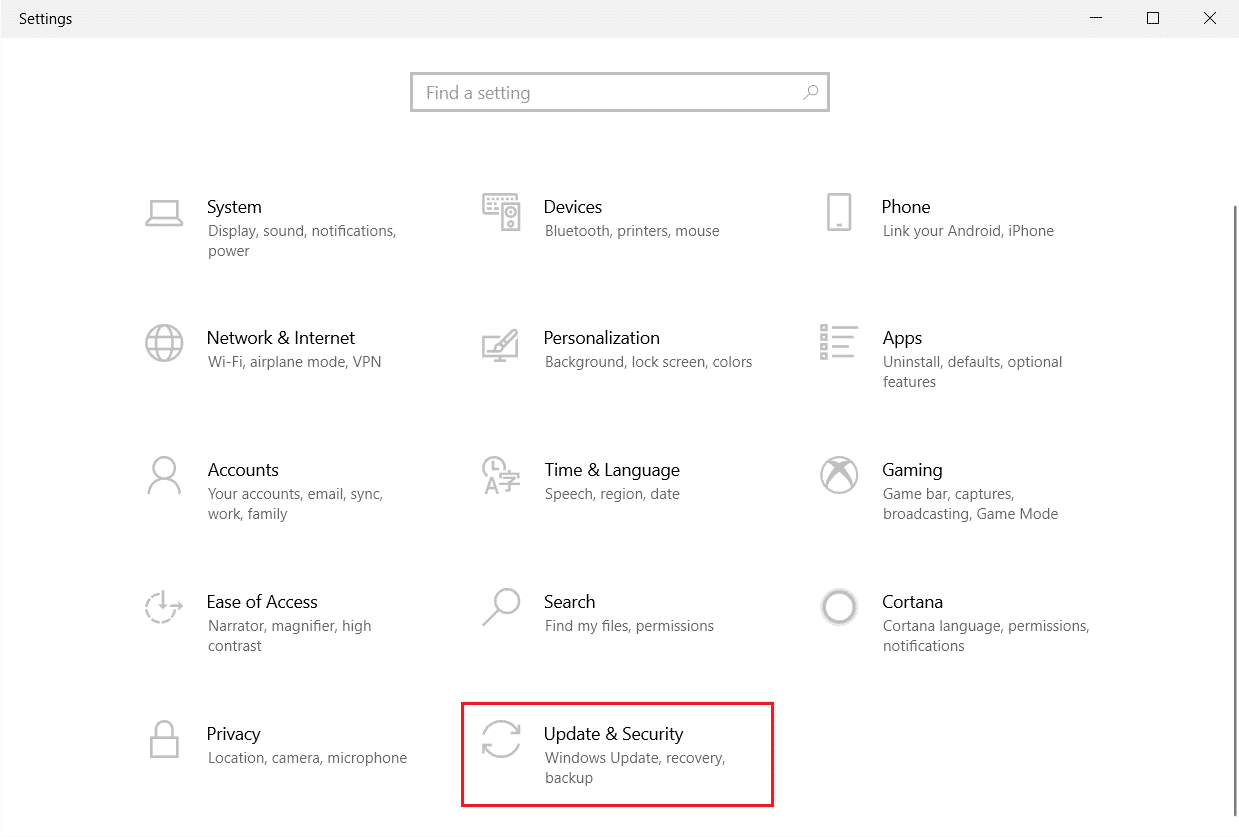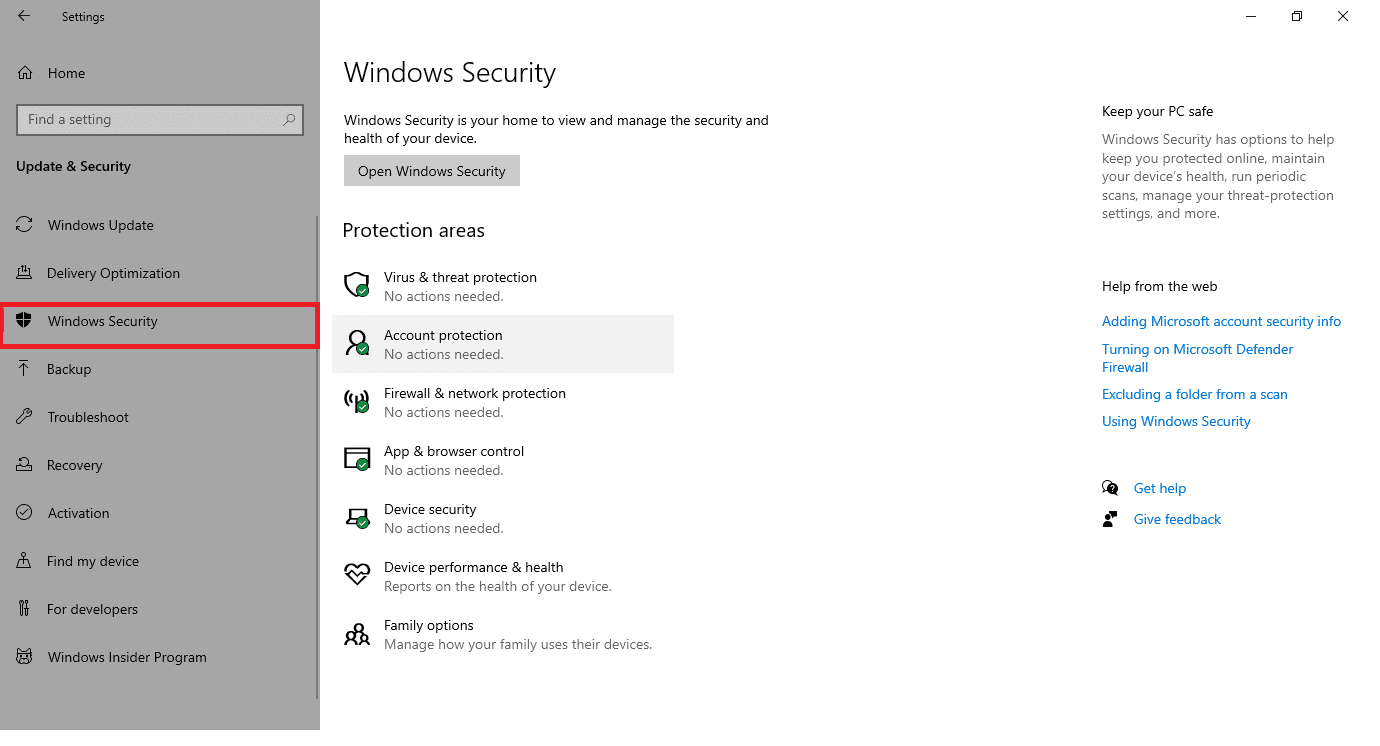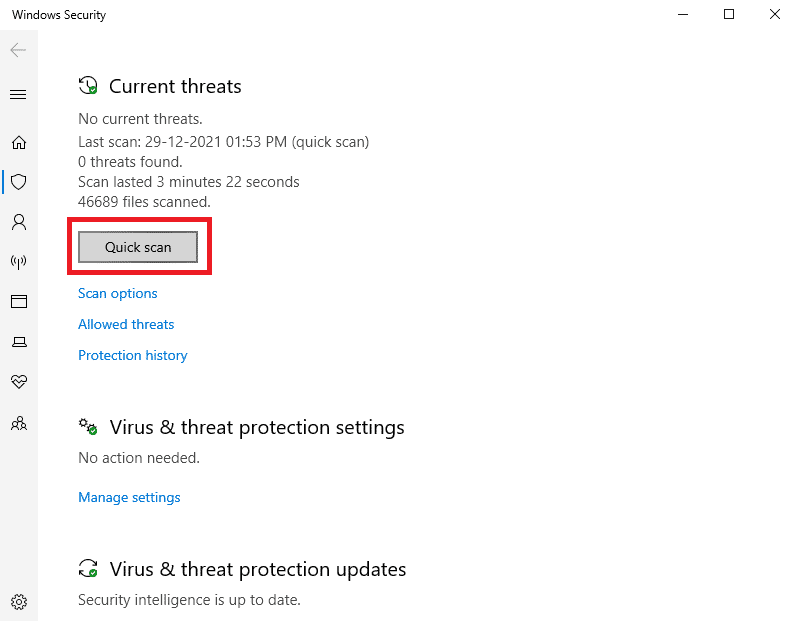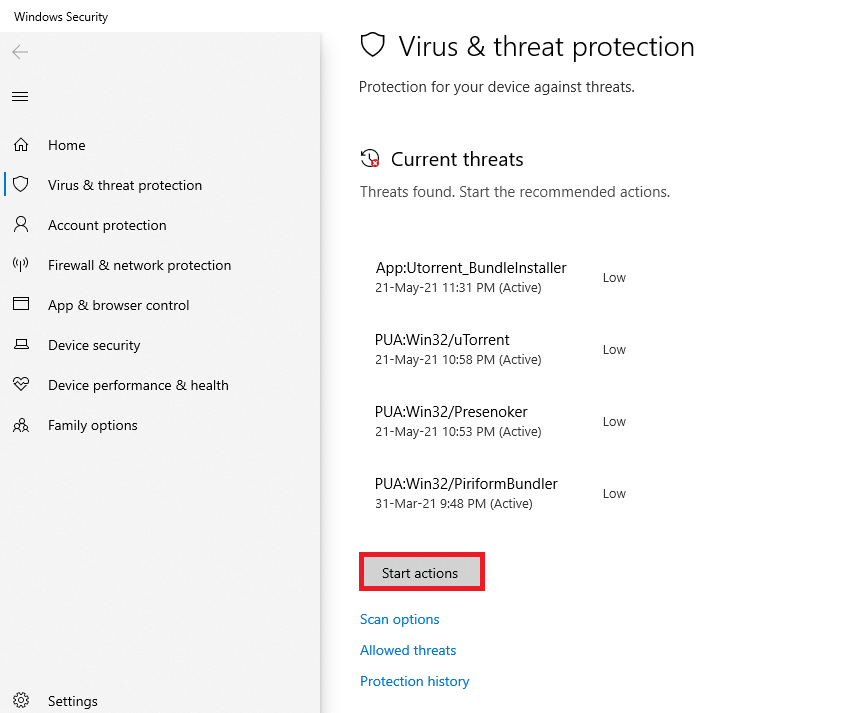How to Fix Windows 10 File Explorer Not Responding
Listed below are the main reasons for File Explorer not responding in Windows 10 PCs:
How to Fix Windows 10 File Explorer Not Responding Pro Tip: Determine Why File Explorer is Not Responding Method 1: Restart Windows Explorer Method 2: Disable Preview and Details Panes Method 3: Delete Temporary Files Method 4: Troubleshoot Windows Hardware and Devices Method 5: Run Windows Memory Diagnostic Tool Method 6: Clear File Explorer History Method 7: Reset File Explorer Options Method 8: Open File Explorer to This PC Method 9: Rebuild Search Index Method 10: Change Display Settings Method 11: Update Graphics Driver Method 12: Run SFC & DISM Scans Method 13: Log-in with Local User Account Method 14: Run Malware Scan Method 15: Update Windows OS Method 16: Roll Back Updates
Outdated Windows version No space in system drives Corrupt operating system files Virus or malware attack Outdated or damaged video card driver RAM or ROM errors Microsoft log-in account issue Problems with Windows search bar Excessive context menu items
Pro Tip: Determine Why File Explorer is Not Responding
Find the cause of File Explorer not responding error using Reliability History as follows:
Click on Start, type View reliability history, then press the Enter key.
Wait until Windows generates the Review your computer’s reliability and problem history report.
Click on the latest date when the error occurred and check Reliability details.
Here, you can view Windows Explorer Stopped working summary.
Click on View technical details option to see the complete details of the error. Note: Before implementing the given solutions, it is advised to clean boot your system. This will load only the essential files and programs and help identify the non-Microsoft apps that are causing problems like File Explorer not responding in Windows 10. Read our guide to Perform Clean boot in Windows 10 here.
Method 1: Restart Windows Explorer
Ending or Restarting its task will help fix the said issue. Follow these steps to restart File Explorer, previously known as Windows Explorer, from Task Manager:
- Hit the Ctrl + Shift + Esc keys simultaneously to launch Task Manager.
- In the Processes tab, right-click on Windows Explorer and click Restart as depicted below.
Method 2: Disable Preview and Details Panes
Often, File Explorer may face issues while opening if Preview and Details panes are enabled. Follow the below steps to disable these panes:
Press Windows + E keys together to open File Explorer.
Click on View in the menu bar as shown.
Ensure that the Preview pane and Details pane options are disabled.
Also Read: How to Remove OneDrive from Windows 10 File Explorer
Method 3: Delete Temporary Files
Your device should have enough disk space for the File Explorer process and service to run properly. Insufficient disk space may also be one of the reasons for this issue. Follow given steps to delete temp files to free-up memory space:
Press the Windows + R keys simultaneously to open Run dialog box.
Type %temp% and hit Enter key to open AppData Local Temp folder.
Press Ctrl + A keys together to select all the unrequired files and press the Shift + Del keys together to delete them permanently. Note: Some files cannot be deleted coz they are being used, so you can skip these.
Method 4: Troubleshoot Windows Hardware and Devices
Windows provides users with in-built troubleshooter to fix any minor issues. Hence, try running Hardware and Devices troubleshooter to resolve File Explorer not responding in Windows 10 issue. Note: Additionally, to clear out more space read our guide on How to Delete Win Setup Files in Windows 10.
Launch the Run dialog box as earlier. Type msdt.exe -id DeviceDiagnostic and hit Enter to open the Hardware and Devices troubleshooter.
Click on the Advanced option, as shown.
Check the Apply repairs automatically option and click on Next.
Click on Next to proceed.
The troubleshooter will now run. If problems are detected, it will display two options:
Apply this fix Skip this fix.
- Here, click on Apply this fix, and restart your PC. Also Read: How to Eject External Hard Drive on Windows 10
Method 5: Run Windows Memory Diagnostic Tool
Any issues with the memory card also cause problems with File Explorer. You can diagnose and fix it using Windows Memory Diagnostic tool as follows:
Click on Start, type Windows Memory Diagnostic and press the Enter key.
Click on Restart now and check for problems (recommended) option shown highlighted.
After booting up, try launching the File Explorer.
Method 6: Clear File Explorer History
All the visited locations in the File Explorer are stored. Clearing this cache can help fix File Explorer working on it or not responding in Windows 10 problem as follows:
Hit the Windows key, type control panel, and click on Open.
Set View by: as Large icons and choose File Explorer Options from the list.
In the General tab, go to the Privacy section and click on Clear button corresponding to Clear File Explorer history.
Then, click OK to save these changes.
Also Read: How to Run File Explorer as Administrator in Windows 11
Method 7: Reset File Explorer Options
If you have recently made changes to your File Explorer options, then this could also cause the Windows 10 File Explorer not to respond to right-click issue. Here’s how to reset File Explorer and folder options:
Launch Control Panel and go to File Explorer Options as instructed in Method 6.
Here, in the General tab, click Restore Defaults button shown highlighted.
Next, switch to the View tab.
Click on Reset Folders, then click Yes to confirm as depicted.
Finally, click Apply to save changes and click OK to exit.
Method 8: Open File Explorer to This PC
If the issue persists even after clearing the File Explorer history, then open the File Explorer to this PC. Follow the below steps.
Again, go to the Control Panel > File Explorer Options as illustrated in Method 6.
Under the General tab, in the Open File Explorer to: drop-down choose This PC option.
Click Apply > OK to save changes.
Also Read: Fix Windows 10 Start Menu Search Not Working
Method 9: Rebuild Search Index
File Explorer is integrated with Windows Search. So, any issues with Windows Search will cause problems with File Explorer. Follow this method to rebuild the search index on Windows 10. Note: Ensure that you log into your PC as an administrator.
Open Control Panel and set View by > Large icons.
Then, choose Indexing Options from the list as shown.
Click on the Advanced button.
Now, click on Rebuild in the Index Settings tab.
Click on OK to confirm.
Restart your PC and try opening File Explorer as it should work without problems.
Method 10: Change Display Settings
Changing the display settings like font size and type can also cause File Manager not to respond. Follow the below steps to modify display settings:
Hit the Windows + I keys simultaneously to open Settings.
Click on System settings tile, as shown.
In the Scale and layout section, choose Recommended options for the following sections.
Change the size of text, apps, and other items Display resolution
Then, click on Advance scaling settings
Here, clear the values under Custom scaling and click on Apply.
Also Read: Fix PC Turns On But No Display
Method 11: Update Graphics Driver
Outdated or damaged video drivers may be the reason for display issues. This also causes File Explorer not responding Windows 7 or 10 issue. Follow the below steps to update graphics driver:
Click on Start, type device manager, and hit the Enter key.
Double-click Display adapters to expand it.
Right-click on video driver (e.g. Intel (R) UHD Graphics) and choose Update driver as depicted below.
Next, click on Search automatically for drivers as shown.
5A. If the drivers have been updated already, it shows The best drivers for your device are already installed.
5B. If the drivers are outdated, then they will get updated automatically. Lastly, restart your PC.
Method 12: Run SFC & DISM Scans
If any of the operating system files get damaged or missing, then the Windows functionality like File Explorer may fail to perform. Repairing system files in Windows 10 will resolve most issues including File Explorer not responding.
Hit the Windows key, type Command Prompt and click on Run as administrator.
Click on Yes in the User Account Control prompt.
Type sfc /scannow and press Enter key to run System File Checker scan.
Note: A system scan will be initiated and it will take a couple of minutes to finish. Meanwhile, you can continue performing other activities but be mindful of not accidentally closing the window. After completing the scan, it will show either of the messages.
Windows Resource Protection did not find any integrity violations Windows Resource Protection could not perform the requested operation Windows Resource Protection found corrupt files and successfully repaired them Windows Resource Protection found corrupt files but was unable to fix some of them
- Once the scan is finished, restart your PC. Check whether the error prevails. If yes, then follow these instructions to run DISM scan:
- Again, launch Command Prompt as administrator and execute the given commands one after the other: Note: You must have a working internet connection to execute DISM commands properly.
Also Read: How to Configure Indexing Options on Windows 11
Method 13: Log-in with Local User Account
Any issues in Microsoft account may also result in a File Explorer not responding issue. Log in using a local user account as follows:
Launch Windows Settings click on Accounts tile, as shown.
Click on the Sign in with a local account instead.
Click on the Next button in the Are you sure you want to switch to a local account window.
Enter the Windows Security PIN to verify.
Then, enter your local account info viz User name, New password, Confirm password & Password hint and click on Next.
Click Sign out and finish button shown highlighted.
Sign in using your newly created local account and launch File Explorer.
Method 14: Run Malware Scan
Sometimes, virus or malware may also cause your File Explorer dark theme to not work. Follow the below steps to run malware scan:
Hit Windows + I keys simultaneously to launch Settings.
Here, click on Update & Security settings as shown.
Go to Windows Security in the left pane.
Click on the Virus & threat protection option in the right pane.
Click on the Quick Scan button to search for malware.
6A. Once the scan is done, all the threats will be displayed. Click on Start Actions under Current threats.
6B. If there is no threat in your device, the device will show the No current threats alert.
Also Read: Enable or Disable User Accounts in Windows 10
Method 15: Update Windows OS
Updating Windows would greatly help in fixing Windows 10 File Explorer not responding errors:
- Navigate to Windows Security > Update & Security as shown in Method 14.
- In the Windows Update tab, click on Check for updates button.
3A. If a new update is available, click Install now and restart your PC to implement it.
3B. Otherwise, if the Windows is up-to-date, then it will show You’re up to date message.
Also Read: Fix Windows Update Error 0x80070005
Method 16: Roll Back Updates
New updates may cause File Explorer not responding Windows 7/10 issue in your device. To fix this issue, you have to roll back the Windows update as follows:
Navigate to Settings > Update & Security as shown previously.
In the Windows Update, Click on the View update history.
Click on Uninstall updates.
Choose the latest update of Microsoft Windows (For example, KB5007289) and click on Uninstall button as highlighted.
Finally, restart your Windows 10 PC. Q1. Does resetting the PC help fix File Explorer not responding issue? Ans. Yes, this method would help in fixing the problem. But make sure that you back up your files and install applications before resetting. You can choose the Keep my files option while resetting, but this option will still remove installed applications and settings.
Q2. Does restoring the PC using recovery mode help fix the File Explorer not responding issue? Ans. Yes, it will help in resolving this issue. Similar to resetting the PC, all the installed applications and games will be deleted. Ensure to back up your files and install applications before resetting them.
Hence, it is advisable to Create a System Restore Point regularly. Recommended:
How to Disable Wakeup Password in Windows 11 How to Fix The Audio Service is Not Running Windows 10 How to Fix Windows 10 Touchscreen Not Working How to Fix StartupCheckLibrary.dll Missing Error
We hope that this guide could help you fix File Explorer not responding in Windows 10. Let us know which of the methods above helped you resolve this issue. Drop your queries and suggestions in the comment section below.



























































